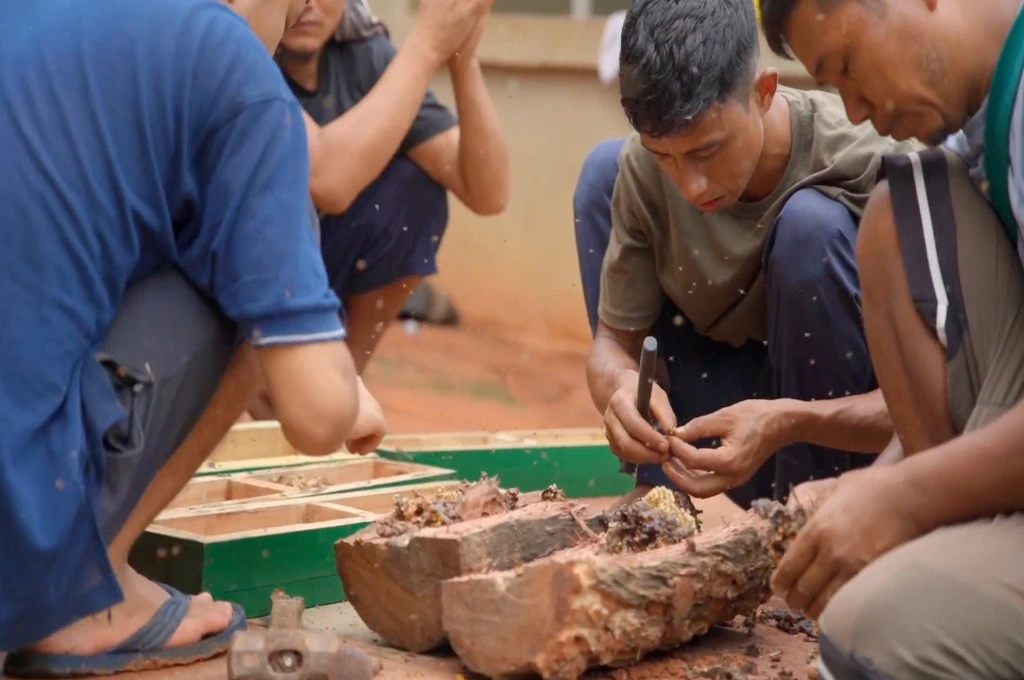India’s waste management market is projected to be worth approximately USD 14 billion by 2025 and is slated to grow by 7 percent annually. Solid waste management refers to the collection, recycling, reuse, treatment, and disposal of discarded material. As waste becomes a sought-after commodity in a growing market, it should bring traditional waste pickers their moment in the sun. Instead, they are being edged out of the environmental work they have been subsidising, in invisibility, for decades.
There are between 15 lakh and 40 lakh informal waste pickers in the country. They have been recovering and sorting reusable and recyclable solid waste from streets, bins, landfills, and material recovery facilities long before recycling became a buzzword. Most of them have accumulated local intelligence and skills needed to bolster a zero-waste cycle.
Yet, organisations working with the community say that most of them are getting displaced and sidelined as waste management systems get formalised. Bharati Chaturvedi, founder of Chintan Environmental Research and Action Group in New Delhi, says, “The way in which the waste world has changed hasn’t been good for waste pickers. There is a rapid decline in their earnings.” They are getting trumped by waste management start-ups, lack of access to waste, and price pressures from large buyers.

With the global breakdown in supply chains during the COVID-19 lockdown, there was less commercial or imported waste coming into India. This meant local waste commanded a premium. Indumathi, who runs a dry waste collection centre (DWCC) in Bengaluru, says, “The rate for dry waste was good during COVID-19. But we were scared to venture out for the first three months. When we finally started going about our livelihood, the curfew and time restrictions got in our way.” In Delhi, Bharati says, unlike the hundreds of thousands of people who walked back to their villages when lockdown was announced in March 2020, waste workers chose not to. “But because of the strict stay-at-home measures, they did not earn enough even for food. Their children were suffering from malnourishment,” she adds.
Disruption of informal chain
Three years on, business has still not picked up adequately for waste workers. Rates for dry waste—especially paper, cartons, and multilayered plastic—remain low. “The buyers have a steady inflow of material from outside the state or country,” Indumathi says. When buyers have bulk supply from external sources, they push down prices for the pickers.
India had banned the import of plastic waste in 2019. However, last year, it lifted this ban partially, citing shortage of waste generated in India. To make it worse, many of the local recyclers and waste traders who bought from waste pickers shut up shop during the pandemic and have not reopened since. Bharati says, “In many cases, the chain has collapsed.”
Because of door-to-door collection, there are few dumping areas left, reducing waste pickers’ access to waste.
This erosion of the informal ecosystem has been unfolding since before the pandemic. Haider Ali Sayyed, who started as a waste segregator in Mumbai 40 years ago and grew to become a trader with 10 waste godowns, talks about how things have changed on the ground. When he revisited his old neighbourhood after a long time, he was distressed by what he heard from the community. “They were in bad shape. They had no access to waste. Earlier, waste pickers would pick material from roadsides, parks, and any outdoor spaces. But now, because of door-to-door collection, there were few dumping areas left. Guards were not letting waste pickers take the trash from building bins,” he says. He learned that the Brihanmumbai Municipal Corporation (BMC) had hired an organisation for doorstep collection of dry waste in the locality. Officials at the BMC told him that this organisation was working for the welfare of waste workers. “I visited the organisation and realised that they had been given land and vehicles to run the operation, but they had no information about the waste workers’ basti even though it was located less than 500 metres away,” he says.
Haider took his case to Assistant Municipal Commissioner Sharad Ugade, who encouraged him to set up the nonprofit Aasra Welfare Association in the area. Aasra went on to prove that the waste pickers had the skill the city needed. “The previous organisation used to pick and segregate two tonnes every day at their centre. Aasra increased this to 25 tonnes per day,” Haider says.


Shrinking opportunities
Bharati has also witnessed a similar process of displacement play out in Delhi, where the rise of big contractors threatens decentralised, smaller waste collectors. “Many new companies have entered the world of recycling. But they do not acknowledge that millions of informal workers depend on it for their livelihood, and have failed to integrate these workers. They carry out welfare activities and events for them but nothing beyond that. In fact, they are piggybacking on the work and knowledge of the kabadis and waste pickers. The informal workers have become tools for somebody else’s success instead of agents for their own progress,” she says.
The 2016 solid waste management rules allow the use of incinerators, which compete with waste workers for high calorific waste.
To make the transition to large-scale waste management sustainable and inclusive, the Ministry of Forest, Environment and Climate Change, through its solid waste management rules of 2016, had directed municipalities and urban local bodies to integrate informal waste workers in the new process. The directive is in sync with the National Urban Livelihoods Mission that aims to reduce urban poverty. But the 2016 rules allow the use of technologies such as incinerators, which compete with waste workers for high calorific waste. This has displaced many of the latter. Similarly, in many cases, the privatised door-to-door collection of household garbage has been outsourced to larger, more formal players.
In 2022, the Bruhat Bengaluru Mahanagara Palike (BBMP) sent out a request for proposal (RFP) for a single contractor to manage its entire solid waste process. But waste workers and SHGs associated with Hasiru Dala protested this move and wrote letters of objection to the BBMP, which then relented. Earlier, in 2015, as a result of their collective demands, the BBMP had set up a tri-party agreement with Hasiru Dala, other resource organisations, and entrepreneurial waste workers to run DWCCs. This included door-to-door collection of waste and processing. Indumathi runs three such centres and employs 88 workers.
In Bengaluru, about 550 informal workers have been integrated into the formal solid waste management system. However, there are approximately 35,000 of them in the city. There are not sufficient jobs with private players or urban local bodies. As Bianca Fernandes from Hasiru Dala points out, “How many jobs can you give out? They need infrastructure support, such as land, vehicles, and identity cards.”
Informal waste pickers need support
A study carried out by the Regional Centre for Urban and Environmental Studies (RCUES), Mumbai, in 2022–23 lists the ways in which informal workers can become an important and integral part of the evolving waste ecosystem. Apart from jobs with private players and urban local bodies for wages, waste pickers can form collectives and participate in the tendering process as SHGs with local bodies, as is being done by Hasiru Dala.
To move up the value chain, they also need other kinds of support. Bharati says, “It is challenging for the waste pickers to become authorised dealers. They don’t have the capital. They need hand-holding with registration, GST, and other complex issues. The toughest challenge is getting land to set up shop in an industrial area, where the rentals are exorbitant.” A 2021 survey conducted by Chintan in Delhi showed that waste pickers do not have designated spaces to work with waste. More than 42 percent waste pickers segregated and sorted waste in their homes, on rickshaws, or by the roadside. Approximately 38 percent reported working in dhalaos or three-walled concrete structures.
Haider adds that traditional waste pickers need practical tips on how to cope with the new formal system. “They don’t understand what their rights are or what schemes they can avail. Most of them are freelancers and not used to schedules and daily fixed hours of work, so when they do get hired by companies, they are unable to stick to the inflexible hours. This is particularly hard for women who have several other responsibilities including household chores and family care to attend to,” he says.
Bianca says, “The government should acknowledge why they need to be integrated into the system. They are very skilled in identifying waste that can be recycled. They are also connected in the chain and ensure that material reaches the right destination.” A Hasiru Dala study in 2011 showed that 15,000 waste pickers in Bengaluru saved the BBMP INR 84 crore in collection and transportation costs every year. According to a 2010 UN Habitat report, waste pickers carry out between 50 and 100 percent of waste work in most cities of the developing world. Their work saves large costs for city governments, which do not pay for the labour.
As more capital and technology make inroads into the waste system, local bodies and civil society organisations can ensure this transition acknowledges the skill and contribution of informal waste pickers and brings them financial stability and upward mobility.
Smarinita Shetty contributed to this article.
—
Know more
- Read this resource to learn more about waste systems.
- Read this report to learn more about why waste pickers need to be included in urban waste management systems.
- Read this article to learn how an environmentalist in Leh is building awareness about waste management in his community.





